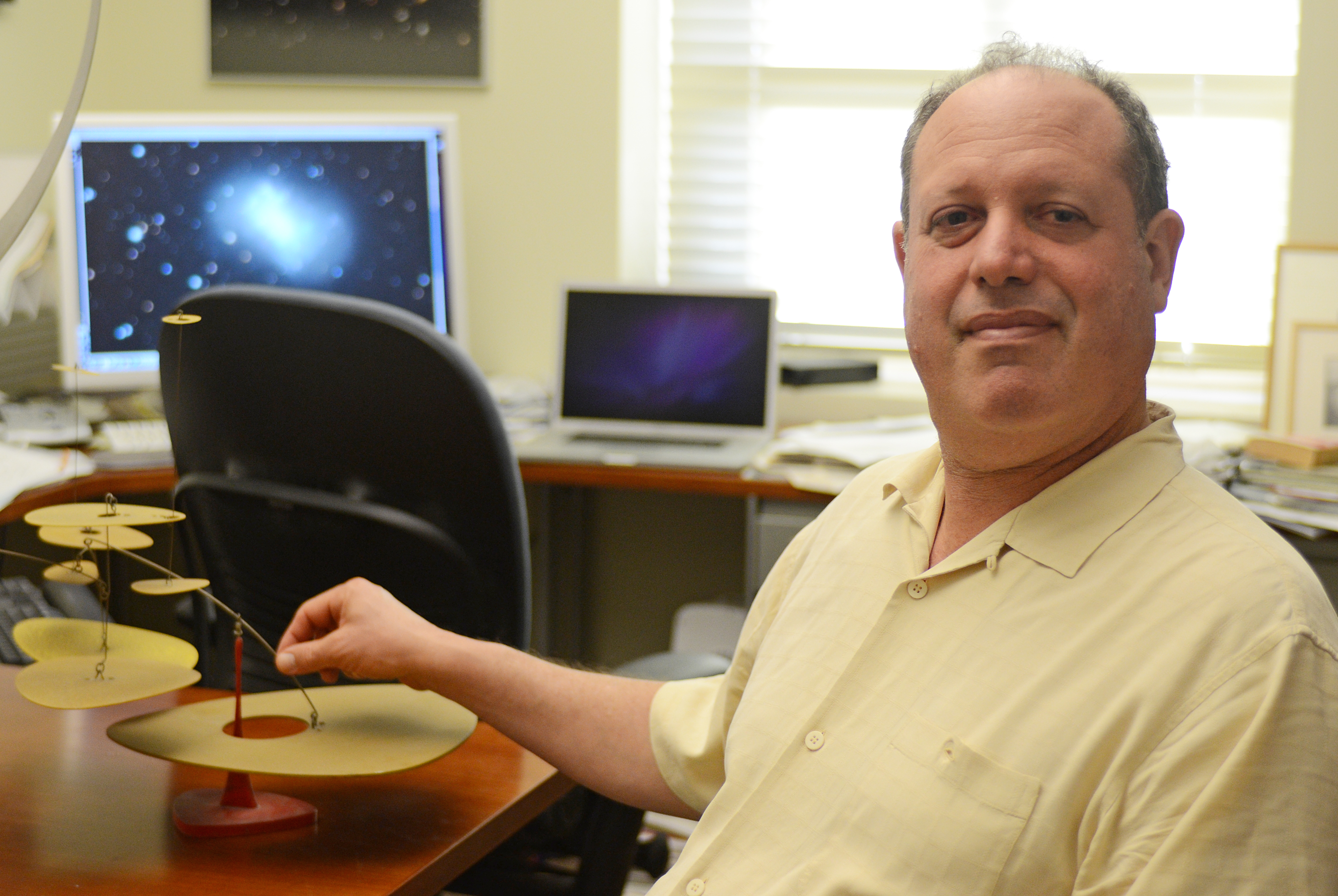In his office in the Physics and Astronomy Building, Michael Rich pointed to a black and white image of a galaxy on his desktop computer screen.
“Our first surprise was when we saw this fuzzy part,” said the UCLA research astronomer, gesturing to a spot at the edge of the galaxy.
The “fuzzy” image, as it turned out, was a dwarf galaxy called NGC 4449B that Rich and his research team discovered while studying a larger host galaxy nearby.
As the team was researching the host galaxy, it noticed the dwarf galaxy, which had not yet been sighted by even the Hubble Space Telescope.
Once the dwarf galaxy was spotted, the team spent weeks processing the images using software that analyzes astronomical images in order to filter out light from other galaxies, said Christine Black, a research assistant on the project.
The team found that the dwarf galaxy is 100 times dimmer than the night sky and the nearby host galaxy has a bright nucleus that shines light over the faint dwarf galaxy, Rich said.
The research team was studying the host galaxy because it was known for having a bright nucleus and rapid star formation, said Francis Longstaff, the Allstate professor of insurance and finance in the UCLA Anderson School of Management who collaborated with Rich in taking images of the galaxies.
Though he technically specializes in finance, Longstaff said astronomy is a hobby for him. He even owns a small observatory where he and his family take pictures of celestial objects.
The team took images of the galaxy using a Centurion 28 telescope, named for having a mirror with a diameter of 28 inches. Longstaff and Rich shared the cost of the telescope.
It’s not that the Hubble is incapable of seeing the dwarf galaxy, Black said. The satellite is simply not pointed at the region where the dwarf galaxy is located.
The Hubble only sees a small area of the sky at a time, while the Centurion 28 had a wider field of view, Longstaff said.
Once images of the galaxy were cleaned and smoothed out, a visiting researcher from Germany, Michelle Collins, worked to compare the dwarf galaxy to the shapes and sizes of other galaxies.
She found that the shape of the newly discovered dwarf galaxy was unlike any that she’d seen before, a result of the dwarf being pulled apart by the gravity of the host galaxy.
The effect is that the dwarf galaxy is more stretched out compared to galaxies of similar brightness and is three to four times more extended than galaxies with similar numbers of stars, Collins said.
Meanwhile, the dwarf galaxy itself is being dismantled and potentially incorporated into its host.
“It’s a small galaxy being eaten by another small galaxy, which we haven’t seen before,” Collins said.
It also shows researchers the evolution of galaxies in progress, Rich said. By its brightness and behavior, the host galaxy resembles what a galaxy looks like 1 billion years after the Big Bang and may be on its way to forming a black hole, Rich said.
Rich predicted that in 300 to 400 million years, the dwarf galaxy will be stretched enough that its stars may be wrapped around the host galaxy ““ an event that Black characterized jokingly as “circling the toilet.”
More research will be done by the team to gain a better understanding of how the dwarf galaxy functions, Rich said.
